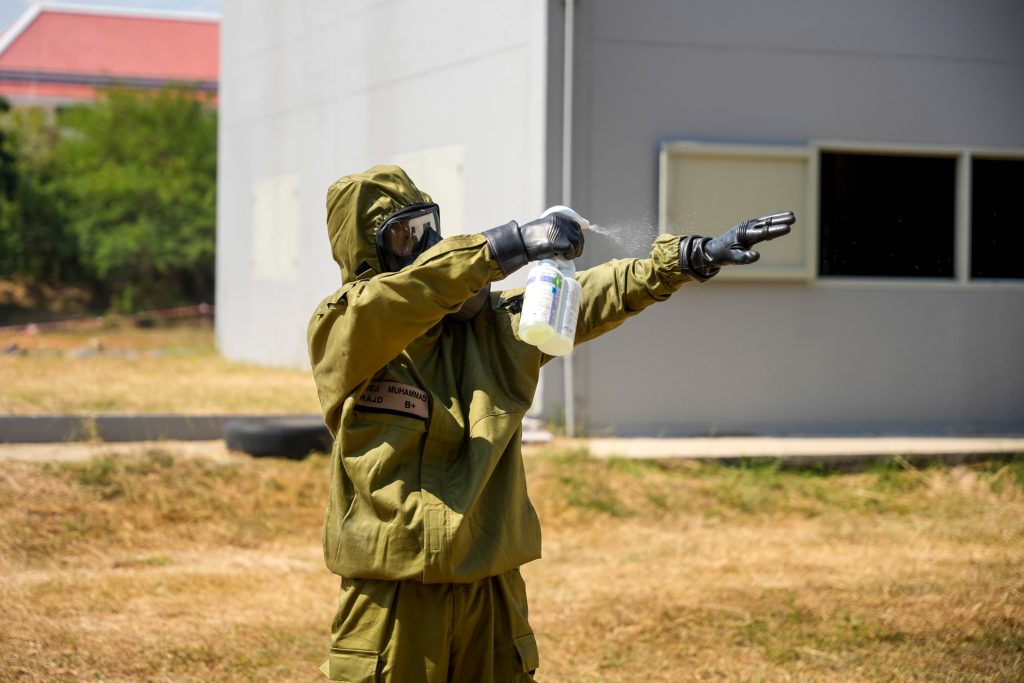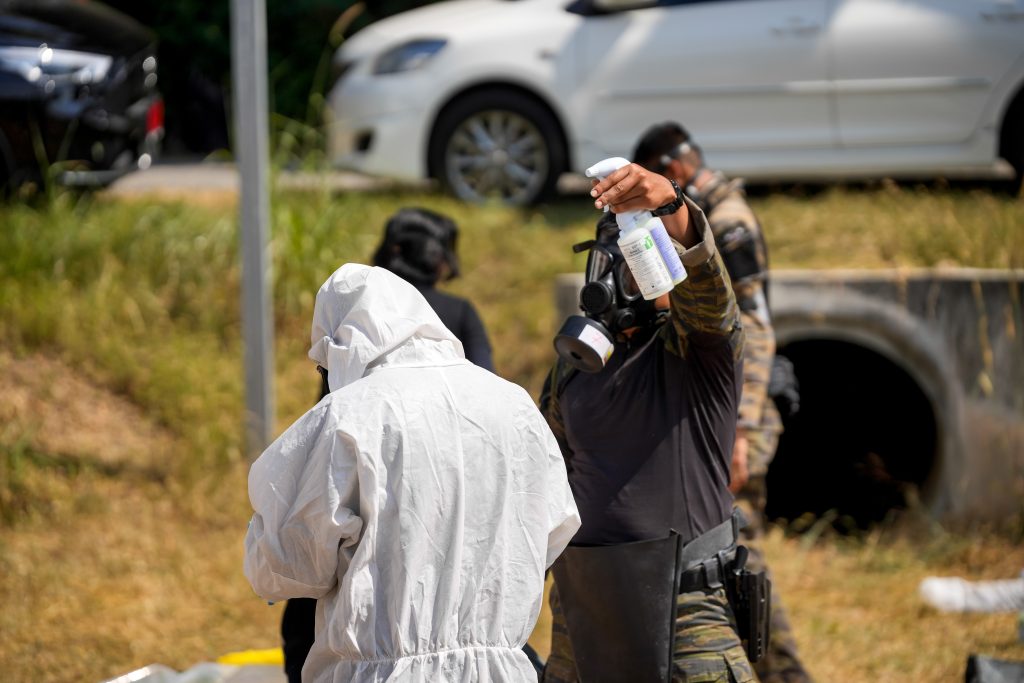Strategic Stockpiling in CBRN Emergencies has become a vital part of modern crisis preparedness. In a world shaped by unpredictable threats, especially in the context of chemical, biological, radiological, and nuclear emergencies, having the right resources at the right time is crucial to saving lives and avoiding supply shortages. But what exactly does strategic stockpiling in CBRN emergencies involve? How can governments and organizations ensure they are prepared? This article explores the importance of strategic stockpiling in CBRN emergencies and how a well-planned strategy can save lives.

What is Strategic Stockpiling?
Strategic stockpiling refers to the targeted and long-term storage of essential products and materials needed for rapid response during crises. In the context of CBRN emergencies, this includes not only medical devices but also specialized equipment, protective clothing, and decontamination agents. These materials are crucial not only for medical use but also for the immediate reaction to chemical, biological, radiological, and nuclear threats.
For CBRN hazards, which can have both natural and man-made causes, a swift and coordinated response is imperative. Preventative stockpiling of countermeasures and protective gear enables affected regions and countries to respond quickly to incidents that could otherwise have catastrophic consequences.
Why Strategic Stockpiling in CBRN Emergencies is Essential?
Strategic stockpiling in CBRN emergencies plays a vital role in minimizing supply shortages. CBRN emergencies demand rapid and coordinated action. Without adequate stockpiles of countermeasures or protective agents, the health and safety of the affected population could be severely compromised. Particularly in an era where threats from terrorism or natural disasters often arise unexpectedly, being prepared is essential.
Unpredictable Events
A key factor in the need for stockpiling is the unpredictability of the threats. Disasters or attacks can occur at any time, and their severity is often difficult to predict. From a targeted attack on a chemical production facility to a natural disaster like an earthquake or a nuclear accident, all CBRN hazards can have significant impacts.
Recent events, such as the terrorist attacks on September 11, 2001, or the Fukushima nuclear disaster, have shown how unpredictable and fast-moving such crises can be. The New York Times documents how Japan’s emergency stockpile helped mitigate the Fukushima disaster. These incidents highlight the necessity for comprehensive and proactive preparedness.
Rapid Response Times
In the event of a CBRN emergency, every second counts. Rapid response times are crucial to minimizing the effects of an incident. Whether it is a chemical or biological attack, countermeasures and protective equipment must be available immediately to prevent serious health complications or death. Delayed access to medical devices and decontamination agents can worsen the situation dramatically.
Long Production Times
Another challenge that strategic stockpiling addresses is the long production and delivery times of many essential medical devices and protective gear. When a crisis occurs, it is too late to wait for new supplies to be produced. In this context, it is worth recalling the unavailability and subsequent problems with medical masks at the beginning of the covid pandemic. Immediate access must be based on existing stockpiles that have been preemptively stored.
Prevention of Shortages
Without strategic stockpiling, even small disruptions in the supply chain during a crisis can have disastrous consequences. That’s why strategic stockpiling in CBRN emergencies must be considered a foundational element of national security planning
How Do Countries Worldwide Implement Stockpiling?
Governments worldwide have developed strategies to protect their populations in the event of CBRN emergencies. These strategies vary based on regional threats and available resources, but there are several core principles applied internationally to maximize the effectiveness of stockpiling.
Risk Assessment and Emergency Planning
A critical first step in any effective stockpiling strategy is risk assessment, which helps identify potential threats. This includes not only traditional threats like chemical attacks or nuclear accidents but also biological hazards like epidemics or pandemics. Risk assessments guide decisions on what resources need to be stockpiled, in what quantities, and at which locations.
Based on these assessments, a comprehensive emergency plan is developed. This plan covers not only stockpiling but also the coordination of various authorities, international partners, and relief organizations. The plan outlines how and when stockpiled resources will be deployed and distributed to ensure a swift response.
Securing Logistics and Infrastructure
A key component of any emergency preparedness strategy is the efficient storage and distribution of CBRN materials. Specialized storage facilities are required to ensure the resources are both secure and accessible. These storage units must be designed to withstand extreme conditions, such as those in the aftermath of a nuclear attack.
An important aspect of logistics is the transportation of resources. Once a crisis occurs, stockpiled materials must be delivered to affected areas as quickly as possible. This requires well-coordinated and swift transportation networks to ensure the safe and prompt delivery of essential supplies.
Early Warning Systems and Rapid Response Capability
Modern technologies play a crucial role in early detection and immediate identification of CBRN threats. Early warning systems that detect chemical, biological, or radiological agents are essential for responding to potential threats swiftly. These technologies allow authorities to recognize an attack or accident early and take immediate action to protect the population.
Strategic Stockpiling Strategy for CBRN Emergencies
Any strategic stockpiling in CBRN emergencies must be based on real-world demand and risk analysis. A successful stockpiling strategy is based on accurate demand analysis rather than budget constraints. For instance, a patient undergoing an FDA-approved CBRN therapy may require 15 packs of a specific medication. To protect 61,000 people, nearly one million packs would be necessary.
Such calculations demand precise planning and regular stock assessments. Stockpiles must be updated regularly and adapted to new scientific knowledge and technological advancements. It is also essential to ensure the quality and efficacy of the stored materials to ensure they can be used effectively during an emergency.
Building a Strategic Stockpiling Plan for CBRN Emergencies
- Ongoing Inventory Management: Regular and accurate inventory checks ensure that stockpiles are always up to date. Expired or no longer usable materials should be replaced immediately.
- Use of Modern IT Systems: IT systems can help monitor stock levels and predict demand. These systems can also provide real-time data, making it easier to make quick, informed decisions.
Case Study: CBRN Emergency Response in Practice
An illustrative example of successful stockpiling in response to a CBRN emergency is Japan’s reaction to the Fukushima nuclear disaster in 2011. Japan immediately deployed its stockpiled iodine tablets and medical emergency supplies to protect affected populations. Similarly, in the wake of the 2001 anthrax attacks in the United States, antibiotics were rapidly distributed to prevent the spread of the disease.
These and similar events demonstrate how a well-designed stockpiling strategy is critical for ensuring a rapid and coordinated response during a crisis.

Conclusion: Stockpiling Saves Lives
Only through strategic stockpiling in CBRN emergencies can governments protect public health in time. A well-executed stockpiling strategy can make the difference between life and death. In an increasingly unpredictable world, strategic stockpiling is not just an option, it’s a necessity. Those who invest in effective emergency preparedness reduce risks and ensure that, in the event of a crisis, help can be deployed swiftly. Strategic stockpiling in CBRN emergencies is the cornerstone of any reliable emergency preparedness framework. Only through proactive and comprehensive planning can we ensure that we remain capable of responding effectively and protecting public health and safety.
To explore our full range of solutions for CBRN emergencies, visit our product overview page. One highlight is our HEYL SD-1 – a professional-grade decontamination spray designed for rapid use in critical situations.